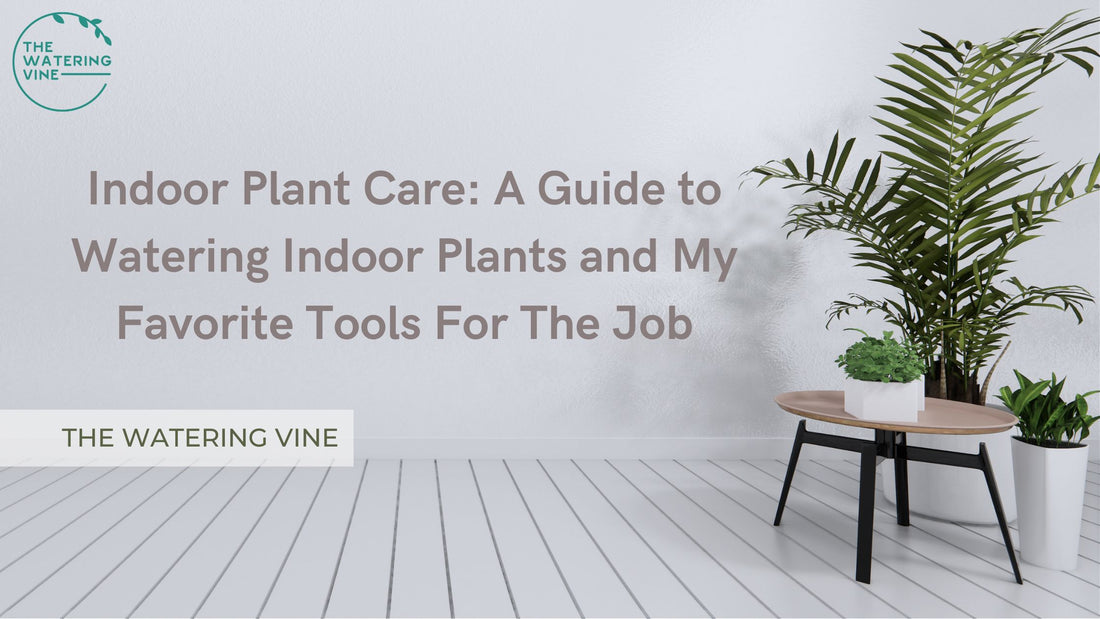Indoor Plant Care: A Guide to Watering Indoor Plants and My Favorite Tools For The Job

Keeping indoor plants thriving requires more than just a green thumb; it's important that you also understand their light and soil needs. In this guide, we'll delve into creating the best watering schedule for your indoor plants, taking into account light exposure, soil types, and the use of tools like indoor hoses and electric spray bottles for optimal care.
Before making a watering schedule, it's crucial to understand the importance of light exposure in plant care. Different plants have varying light requirements, categorized broadly as low, medium, and highlight. Assess your indoor space to determine the light conditions each plant receives. South-facing windows typically offer the most light, while north-facing ones provide the least. Make sure your plants are placed in areas they are going to receive the light they need to thrive.
Utilizing Tools for Efficient Watering:
I use an indoor watering hose when it comes to watering my indoor jungle. This hose is best for me because of the ease, I can get all of my watering done in one sweep, I don't have to lug a watering can back and forth. I can adjust the water pressure to mimic rainfall, and evenly water the soil without causing compaction. The hose connects directly to my kitchen or bathroom sink and comes with the adapters so it's extremely easy to set up each time I water my plants and comes in handy for other things as well. I can use it to give my dog an outdoor bath in the fall and use the warm water, as well I can fill up my 20 gallon fish tank without the need of buckets.
For smaller or delicate plants, I use an electric spray bottle. This offers me precise control over watering and I also use her to clean the dust off of all the leaves. This tool is especially useful for humidity-loving plants and helping me get a close up look at all my plants leaves to prevent pests.
Watering Guidelines Based on Light and soil:
- These low light plants, such as snake plants or peace lilies, can survive in indirect or filtered light. Since they have slower growth rates they will need less frequent watering. they should be watered sparingly, allowing the soil to dry out partially between waterings. Overwatering can lead to root rot.
- Medium Light Plants, examples include pothos, philodendrons, and spider plants. They tolerate a range of light conditions but prefer indirect sunlight. Water these plants when the top inch of soil feels dry to the touch. Ensure proper drainage to prevent waterlogging.
- High Light Plants: Plants like succulents, cacti, and most flowering plants require bright, direct sunlight. Water these plants when the soil is completely dry, typically every 1-2 weeks depending on humidity levels and pot size.
Soil types significantly impact water retention and drainage, influencing watering frequency. Common indoor plant soil types include:
- Peat-based mixes: Retain moisture well but may compact over time, affecting drainage.
- Perlite or sand mixes: Enhance drainage and aeration, preventing waterlogging.
- Cactus or succulent mixes: Composed of gritty materials for improved drainage, ideal for plants sensitive to overwatering.
I recommend using perlite cactus mix for best plant health, peat based mixes don't allow drainage and cause root rot and a good home for unwanted fungus gnats.
Conclusion:
Crafting the perfect watering schedule for indoor plants can be difficult, but if you pay attention to soil and light conditions you are off to a great start of understanding your plants. By tailoring watering frequency to individual plant needs and optimizing moisture levels in the soil, you can make sure your plants have healthy growth year-round.

